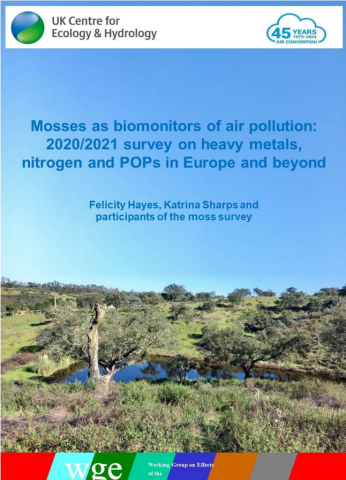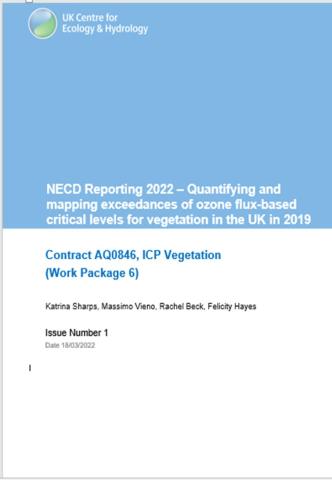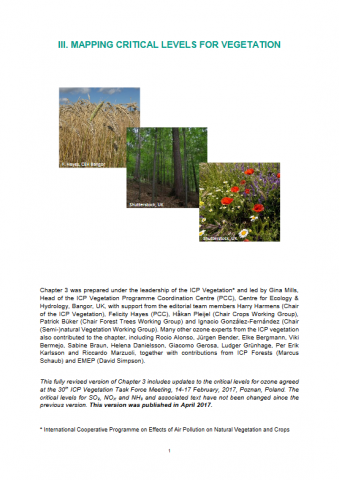| Title | First thorough identification of factors associated with Cd, Hg and Pb concentrations in mosses sampled in the European Surveys 1990, 1995, 2000 and 2005 |
| Publication Type | Journal Article |
| Year of Publication | 2009 |
| Authors | Holy M., Pesch R., Schroder W., Harmens H., Ilyin I., Alber R., Aleksiayenak Y., Blum O., Coskun M., Dam M., De Temmerman L., Fedorets N., Figueira R., Frolova M., Frontasyeva M., Goltsova N., Miqueo L.G, Grodzinska K., Jeran Z., Korzekwa S., Krmar M., Kubin E., Kvietkus K., Larsen M., Leblond S., Liiv S., Magnusson S., Mankovska B., Mocanu R., Piispanen J., Ruhling A., Santamaria J., Steinnes E., Suchara I., Thoni L., Turcsanyi G., Urumov V., Wolterbeek B., Yurukova L., Zechmeister H.G |
| Journal | Journal of Atmospheric Chemistry |
| Volume | 63 |
| Pagination | 109-124 |
| Date Published | Jun |
| ISBN Number | 0167-7764 |
| Accession Number | WOS:000281088200002 |
| Keywords | heavy metals |
| Abstract | The aim of this study was, for the first time ever, to thoroughly identify the factors influencing Cd, Hg and Pb concentrations in mosses sampled within the framework of the European Heavy Metals in Mosses Surveys 1990-2005. These investigations can be seen as a follow up of a previous study where only the moss data recorded in the survey 2005 was included in the analysis (Schroder et al. 2010). The analyses of this investigation give a complete overview on the statistical association of Cd, Hg and Pb concentrations in mosses and sampling site-specific and regional characteristics, encompassing data from 4661 (1990), 7301 (1995), 6764 (2000) and 5600 (2005) sampling sites across Europe. From the many metals monitored in the European moss surveys, Cd, Hg and Pb were used as examples, since only for these three metals deposition measurements are being recorded in the framework of the European Monitoring and Evaluation Programme (EMEP). As exemplary case studies revealed that other factors besides atmospheric deposition of metals influence the element concentrations in mosses, the moss datasets of the above mentioned surveys were analysed by means of bivariate statistics and decision tree analysis in order to identify factors influencing metal bioaccumulation. In the analyses we used the metadata recorded during the sampling as well as additional geodata on, e.g., depositions, emissions and land use. Bivariate Spearman correlation analyses showed the highest correlations between Cd and Pb concentrations in mosses and EMEP modelled total deposition data (0.62 a parts per thousand currency signaEuro parts per thousand r(s) a parts per thousand currency signaEuro parts per thousand 0.73). For Hg the correlations with all the tested factors were considerably lower (e.g. total deposition r (s) a parts per thousand currency signaEuro parts per thousand 0.24). Decision tree analyses by means of Classification and Regression Trees (CART) identified the total deposition as the statistically most significant factor for the Cd and Pb concentrations in the mosses in all four monitoring campaigns. For Hg, the most significant factor in 1990 as identified by CART was the distance to the nearest Hg source recorded in the European Pollutant Emission Register, in 1995 and 2000 it was the analytical method, and in 2005 it was the sampled moss species. The strong correlations between the Cd and Pb concentrations in the mosses and the total deposition can be used to calculate deposition maps with a regression kriging approach on the basis of surface maps on the element concentrations in the mosses. |
| Short Title | J Atmos ChemJ Atmos Chem |
| Alternate Journal | J Atmos Chem |


